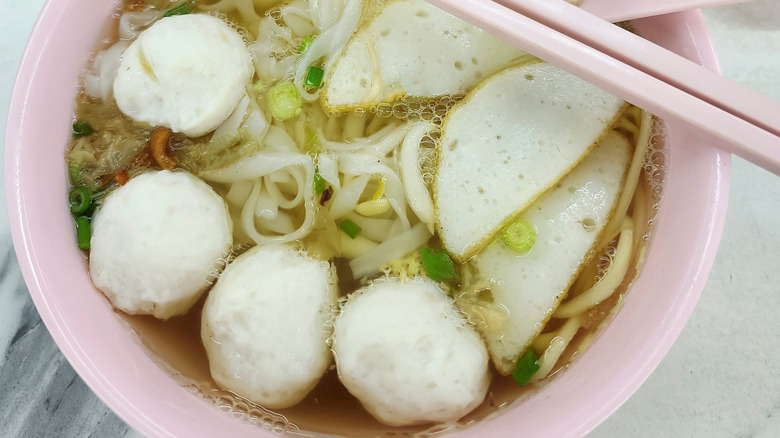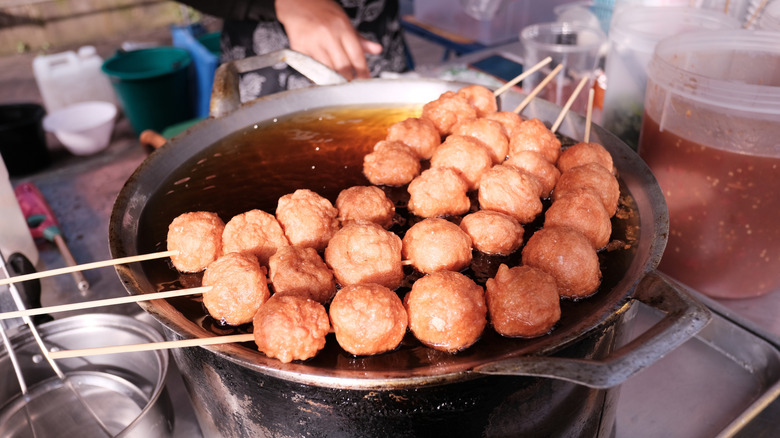What Exactly Are Fish Balls Made Of?
Explore the local cuisine of East and Southeast Asia, and it won't be long before you encounter a fish ball. The popular food emerged centuries back in China, with some accounts dating the dish to as far back as the 200s B.C. Spread through trade, the dish is now found in a variety of contexts across Southeast Asia, with further-flung renditions in Europe and West Africa.
When enjoying the tasty creation, you may have wondered what comprises fish balls. There are a wide range of renditions, and the most common is the Teochew variety, popularized across Southeast Asia by the ethnic group of the same name. Firm but not chewy, these fish balls come together from an eel base that's oftentimes complemented with a fatty fish, such as mackerel, for flavor. Some integrate the two ingredients with only ice cold water, but sweet potato starch is a common binder and enables the mixture to stick. Flavorings are limited to salt, black and white pepper, perhaps sugar, and sesame oil. When you're enjoying a high quality fish ball, it's the seafood base that lets the flavors shine.
Fish balls incorporate varying fish types
While the Teochew-style fish balls make an appearance in many countries, they're not the only rendition . You'll also find many versions made of fish paste, which expands the possible fish varieties. In Sierra Leone — where the dish is called huntu — chopped haddock is combined with vibrant aromatics like ginger, chiles, and onions and covered in a sesame seed crust. Norwegians reach for cheap white fish, stabilizing the paste with potato starch for a more mild rendition. Sicilian cooks use swordfish as the fish foundation and complement it with classic Italian additions of breadcrumbs, egg, and cheese. Called polpette di pesce, the mixture gets covered in flour and pan-fried to crispy perfection.
Fish balls are malleable, so you can try mixing varying ingredients into your paste formula and then frying, steaming, or poaching them to completion. And, take note on how to serve them – a curry powder–based sauce is a popular option, with recipes found in as wide-ranging places as Hong Kong and Denmark. In Asia, you'll also frequently find fish balls as the centerpiece of a noodle soup, complemented by a broth topped with fried shallots and chiles. Don't miss out on this fish-based favorite; it's a delicious showcase of the protein.

